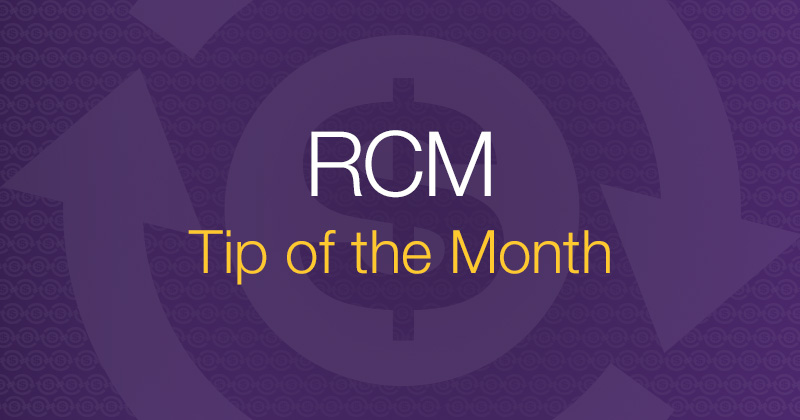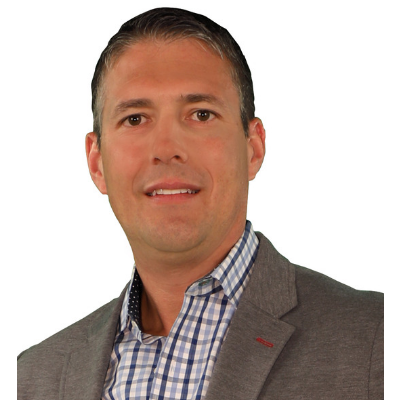Revenue Management Tip #1: Collect Patient Balances in the Office

How practice management software and revenue cycle management services can help improve the financial health of your practice.
Running a successful medical practice can be complex and daunting. As a physician, you should focus on providing the best medical care for your patients, but oftentimes your time and resources are divided between managing the clinical, operational and financial operations of your practice. With so many moving parts to keep a practice moving forward, sometimes it can feel like you have too many balls in the air. Each month I will provide a revenue management tip to help guide you down the path of financial success for your business, so you can refocus your time on your patients.
As a physician and medical practice owner, you’re in the business of patient care and satisfaction. This goes beyond the actual medical services and encompasses the entire patient experience, from their initial appointment call and setup, to the office visit, and—yes—the medical billing and payment collection, too.
Over the last several years, regulatory and reimbursement changes have shifted more of the responsibility for healthcare decision making and payment to the patient. Now instead of focusing on collecting payment from a handful of insurance payers, you are now faced with the reality of having to collect payment from potentially hundreds of patients.
You don’t want outstanding patient balances to hinder relationships with your “customers,” nor do you want to lose out on money you’re entitled to. Often, physicians and practice managers resort too quickly to sending outstanding patient balances to collections, which often doesn’t feel right for you or the patient. Fortunately, a better and more efficient way to handle patient balances exist: collect them in the office at the time of service. This will also help improve your cash flow.
How Our Practice Management System Can Help
Modernizing Medicine’s easy-to-use Practice Management system provides increased visibility into patient balances due, making it easier for the front office staff to collect patient payments during the check-in or checkout process. Seamlessly integrated with our EHR system, EMA™, Practice Management helps unify your clinical, financial and operational data and processes.
Nicole Mayo, daily operations administrator at Panhandle Orthopaedics, shared her experience with Practice Management. She said, “My front office staff loves the check-in and checkout process; especially the ability to view outstanding balances for collections before the appointment. This is much better than our previous system. We had separate EHR and PM systems and we had to log into both and manually enter information between the two systems. The integration between EMA and Practice Management is great!”
Dawn Fortner, practice manager at Southeastern Dermatology Consultants, shares the benefits they have experienced with Practice Management, including the ability to collect patient payment at the time of service.
Shifting Your Office Culture
Collecting patient balances in the office requires your staff to be assertive, yet patient-friendly when discussing patient balance and responsibility, which can be challenging. But keep in mind, you are a business providing a valuable service—one in which you’ve invested time, money and effort to provide quality care. Therefore, it’s reasonable to expect patients to understand, accept and meet their financial responsibility.
Of course, collecting payment up front requires your staff to know what is due at time of service. Build upfront patient balance collection into your office policy and culture, so it becomes a standard expectation for both staff and patients. Also, train your staff in this area and set up your own internal collection policies, leaving outside collections only as a last resort after a considerable amount of time.
With a little time and training combined with practice management software that provides patient balance information, your front office staff should be able to make patient payment collection a regular part of the office workflow.
Consider a Third-Party Professional Revenue Service
Another option available to practices that may not have staff resources available to focus on patient collections is to opt for a third-party professional revenue service. Modernizing Medicine’s Revenue Cycle Management provides medical billing and collections services for dermatology, gastroenterology, ophthalmology, orthopedics and otolaryngology practices. From before the patient is seen, until the balance is paid, our dedicated revenue cycle specialists can help improve the financial and operational aspects of your practice. They can mail out patient balances and offer an inbound billing hotline to handle patient balance questions and patient payment processing, helping to improve the patient collection rates and the overall cash flow for your practice.
Marie Miller, office manager at Danville Dermatology, shared “Since using RCM, our patient collections have been the best they’ve ever been and our accounts receivables have decreased significantly. Modernizing Medicine manages the entire dermatology billing process, from the time the patient comes in until the time we are paid and we have 100 percent visibility in real time throughout that process. We can now focus on what we do best, providing quality patient care.”
